Fish have accompanied humans for more than 5,000 years and have formed an indissoluble bond with humans. They have become extremely important food and ornamental pets in human daily life. There are about 32,000 species of fish discovered in the world. Fish live in water and are distributed in oceans and freshwater. Two-thirds of them live in the ocean, and the rest live in freshwater. So do you know what prehistoric fish are alive today? There are frilled sharks, coelacanths, lampreys, arowanas, sturgeons, Senegalese rays, dagoba, crocodile gar, arapaima, and great white sharks. Let’s take a look at the characteristics of these prehistoric fish.
1. Frilled shark (380 million years ago)
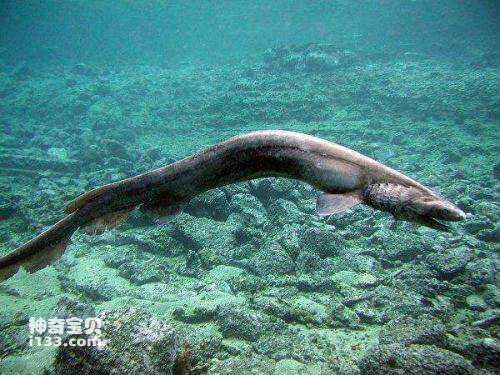
Frilled shark, a species of shark in the genus Frilled shark of the family Frilled shark. The frilled shark, also known as the pseudo-eel, is a primitive type of shark with no subspecies differentiation and is known as a "living fossil". There are six gill slits on both sides of the body. The gill intervals are extended and wrinkled, and they cover each other, so it is named the frilled shark. Frilled sharks mostly live in the deep sea, and their distribution range is almost all over the world but very fragmented. The reason why frilled sharks have more gill slits than other sharks is probably because they mostly inhabit deep-sea environments. They live in deep seas of 500-1500 meters and existed as early as 380 million years ago.
2. Coelacanth (377 million years ago)
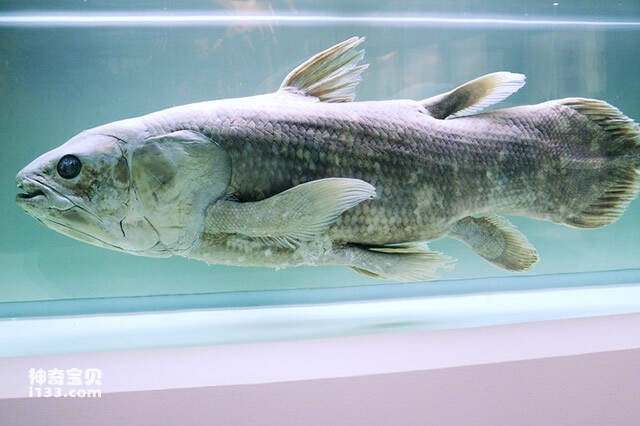
Coelacanth, the collective name for some lobe-finned bony fishes of the order Coelacanth. Related but extinct species of the suborder Fan-finned Fish are thought to be the ancestors of terrestrial vertebrates. The modern coelacanth is a deep-sea fish of the family Scytheidae, so named because of its hollow fin spines. Larger than most fossil species. It is a ferocious predator with a thick, slimy body, limb-like fins and flexible movement. The colors are bright and easy to distinguish. The coelacanth first appeared and evolved 377 million years ago, and was extremely abundant on the earth at that time. Coelacanth fossils were found from the end of the Permian to the early Cretaceous.
3. Lamprey (360 million years ago)
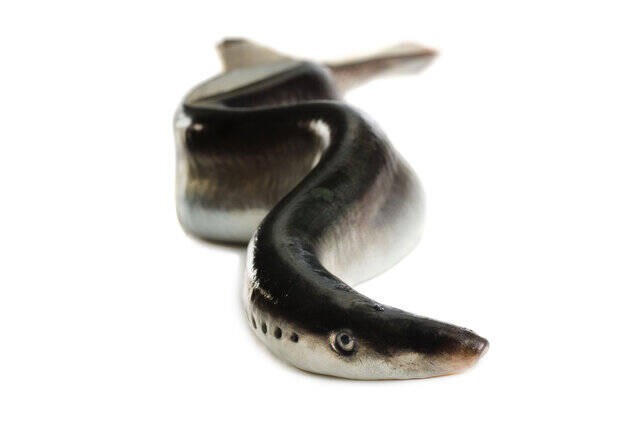
Lamprey, also known as lamprey and seven-star, is an ancient animal of the order Cylostomata and order lamprey. It is also an intermediate point in the evolution of invertebrates into fish. It is regarded as the most primitive one of the fish-shaped animals. kind. Lampreys look very much like ordinary eels, with a slender, eel-shaped body, exposed skin and no scales. There is a long dorsal fin on the back, which extends back to the end of the tail and surrounds the tail to form a caudal fin. In addition, it There are no other fins on the body. Lampreys are one of the few remaining jawless vertebrate fishes. The lamprey fossil was found to be 360 million years old, before the appearance of dinosaurs. Therefore, lampreys are called "living fossils" and are of great significance to the study of biological evolution.
4. Arowana (355 million years ago)
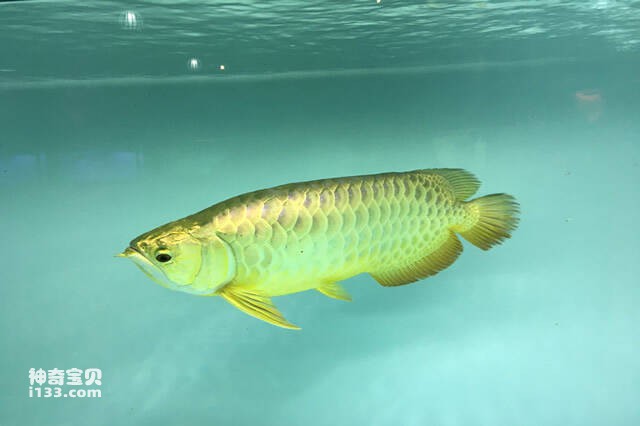
The beautiful bonefish is also known as Asian arowana and golden arowana. It is an ancient primitive freshwater fish. Adult fish are 40-50 cm long and can live for decades. It has a ferocious temperament and mainly hunts live fish, shrimp, aquatic insects, frogs, etc. Developed as an ornamental fish since the middle of the 20th century, it has attracted much attention for its armor-like scales, bright light colors, and majestic appearance. Its worth has risen to the level of tens of thousands of dollars, and it has become a One of the most valuable ornamental fish. As far back as the Archaean Carboniferous, arowanas belonging to the family Osteoglossidae have already begun to exist. 140 million years ago, arowanas migrated to Asia and the Indian subcontinent, and the movement of the earth's crust gradually distributed them to all continents around the world.
5. Sturgeon (150 million years ago)
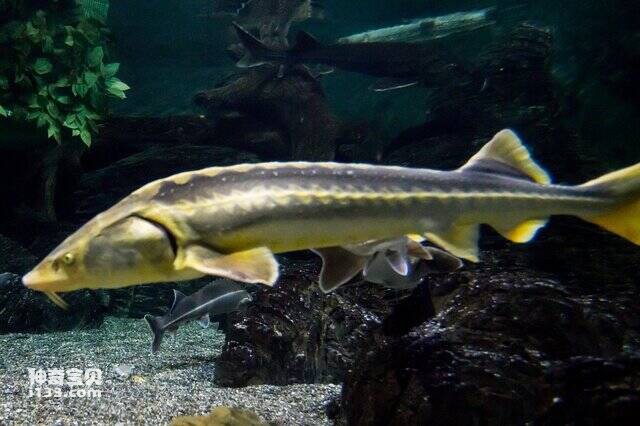
Sturgeon is one of the earliest extant vertebrates. What we usually call sturgeon usually refers to fish of the order Sturgeon, which is one of the most primitive groups of fish. Sturgeons belong to the order Osteichthyes, subclass Actinopterygium, superorder Scleroderma, and order Sturgeon. The sturgeon is a rare ancient fish left over from the Mesozoic Era 150 million years ago. It is between cartilage and hard bone. The degree of ossification of the bones is generally reduced. The central axis is an unossified elastic notochord without vertebrae. Most of the cartilage shell accompanying the skull is not ossified.
6. Senegalese Polypterus (145 million years ago)
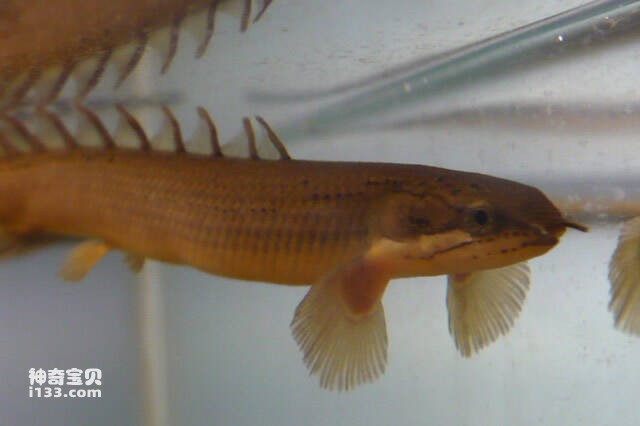
The Senegalese polypterus is a freshwater fish, commonly known as polypterus, also known as golden dinosaur and nine-segmented dragon. It belongs to the order Polypterus and belongs to the family Polypteridae. Polypterus is an ancient fish that is endemic to Africa. Golden dinosaurs are widely distributed in freshwater streams and lakes in East Africa, West Africa, and Central Africa. They are abundant in production and have a special structure. They are an important species for the study of fish evolution. They also have a unique appearance and can be used as ornamental fish. This fish has appeared on the earth around the Cretaceous Era. Their ability to survive is very tenacious. With its very dense scales, this fish's body has a water retention capacity that far exceeds that of other fish. So even if you leave the water for a long time, the Senegalese multifin fish will not necessarily die.
7. Daphne’s catfish (130 million years ago)
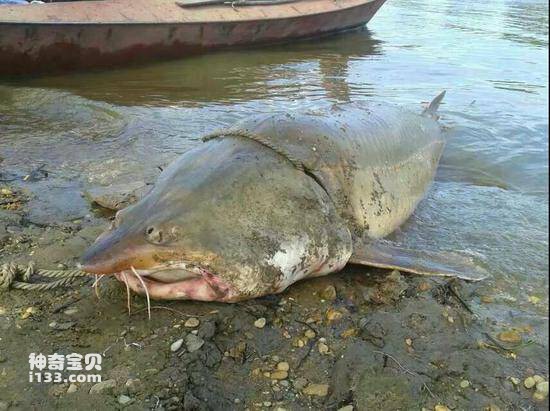
Da's catfish, commonly known as catfish. The English name is kalugasturgeon. The Cartilage fish species originated in the Cretaceous period 130 million years ago. It is a rare fish found only in the Heilongjiang Basin in the world. The Daphne's catfish is relatively large and is the largest among freshwater fishes. Mainly distributed in the Heilongjiang River and lakes connected to its larger tributaries, especially in the middle reaches of the Heilongjiang River; followed by the Wusuli River and the lower reaches of the Songhua River, and occasionally found in the lower reaches of the Nenjiang River. This fish is a freshwater fish that never swims into the sea. It is divided into populations in the Heilongjiang estuary, populations that live in the river all year round, and populations in the freshwater waters along the Sea of Okhotsk and the Sea of Japan.
8. Alligator gar (more than 100 million years ago)
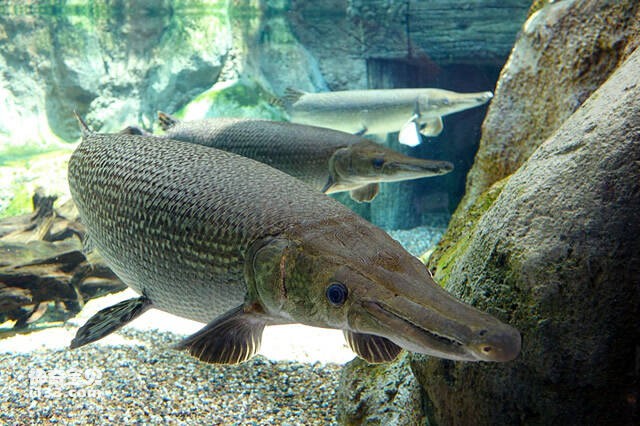
The alligator gar is the largest of the seven species of gar in North America and can grow up to 3 meters in length. It is a large and ferocious fish that mainly lives in pure fresh water and occasionally enters brackish water. Likes to live alone. The eggs are poisonous, green in color, and adhere to aquatic plants or gravel. The alligator gar is a giant freshwater carnivorous fish native to southern North America. It is a prehistoric fish and has existed on the earth for more than 100 million years. Its name comes from the shape of its snout, and its entire body is covered with hard, super-hard enamel fish scales. Fossils date from the Upper Cretaceous. In ancient times, it was found all over North America, Europe, India and Africa. Now it is only found on the east side of North America, Central America and Cuba. It is a large and ferocious fish.
9. Arapaima (100 million years ago)

Arapaima, a species of the genus Arapaima, also known as walrus fish. Adult fish can reach 2-6 meters in length and weigh up to 100 kilograms. The body is huge, elongated and slightly flattened laterally. The skull bones are composed of free plate-like bones. Big mouth, no beard. There is no mandible, and there are strong and well-developed teeth on the tongue. Arapaima is a remnant of ancient freshwater fish. It is speculated that it first appeared 100 million years ago. Because of the bony teeth growing out of its tongue, this type of fish is called Osteoglossus. Arapaima occurs mainly in the river flats of the Amazon basin, but the exact age of its distribution, especially in the lower part of the basin, is unknown.
10. Great white shark (20 million years ago)
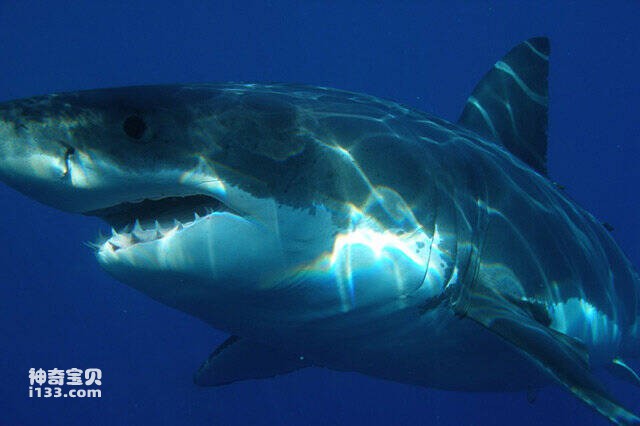
The great white shark, also known as the man-eating shark, is the largest carnivorous fish, with a body length of up to 6.5 meters and a weight of 3,200 kilograms. It has a crescent-shaped tail, large teeth with serrated edges, and is triangular in shape. The teeth are 10 centimeters long. It has a large and aggressive nature. shark. But precisely because it is so huge, it can be considered the ultimate predator in the food chain, that is, the highest-level consumer. Great white sharks are distributed in tropical and temperate zones of all oceans. They generally live in open ocean areas, but often enter inland waters. Their favorite prey is seals and sea lions, and occasionally dolphins and whale carcasses. The great white shark first appeared in the Miocene and is the only extant member of the genus Anthrozoon.
animal tags:
We created this article in conjunction with AI technology, then made sure it was fact-checked and edited by a Animals Top editor.